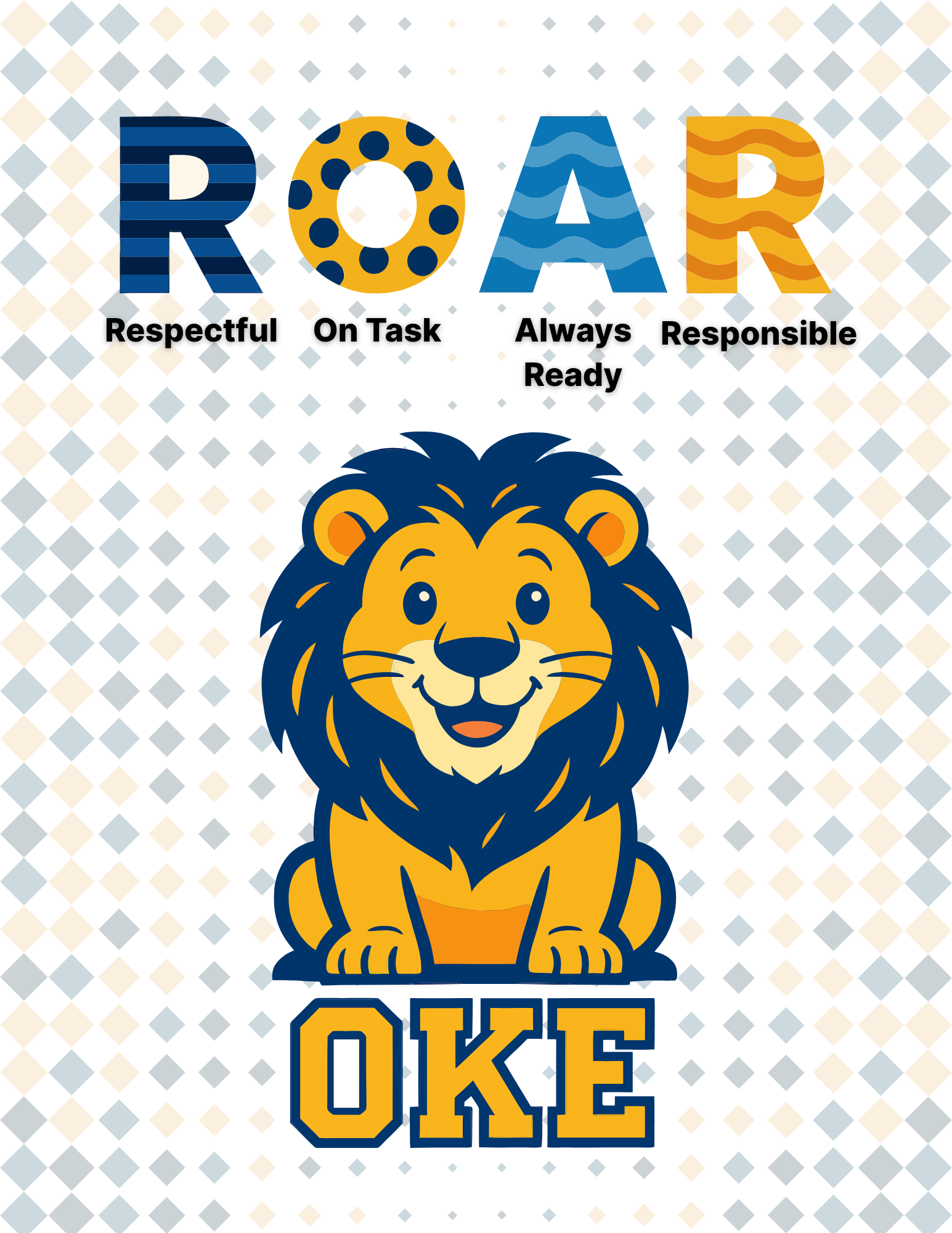About Our School
About Our School
Our Mission
The mission of Orchard Knob Elementary is to create a welcoming and structured environment that nurtures curiosity and promotes academic, social, and emotional success.

Vision
Orchard Knob Elementary is committed to empowering students with the knowledge and skills to thrive in a competitive society.
Beliefs
- All students must be academically, socially, and emotionally prepared to lead productive lives.
- Our students must have the skills and knowledge to become life-long learners and participants in our society.
- Parents and community stakeholders are essential partners of teachers and students at Orchard Knob Elementary.
- Every student deserves the right to receive high-quality, data-driven instruction delivered by highly effective teachers who apply best practices that are grounded in research.
Core Values
- All students deserve a champion.
- All students deserve to be treated with dignity and respect.
- All students can learn and will thrive.
Academic Focus

Read Effectively

Think Creatively & Critically

Write Logically
Location
Orchard Knob Elementary School is located on Orchard Knob Avenue, bordered by East Third and East Fourth streets.
History
1902: The school originally opened on North Holly Street as Tenth District School.
1904: It moved to its current site and was renamed Orchard Knob due to its proximity to the historic Orchard Knob Reservation, a significant Civil War battle site.
Leadership and Early Education:
- First Principal: Professor John Williams.
- Grades: Initially served grades one through twelve.
- Early Enrollment: Students who could read were placed in first grade, while those who couldn’t were placed in the "charcoal class," similar to today’s kindergarten.
Significant Events:
- Fire Incident: The original building burned down during Mr. Billingsley's tenure as principal and was subsequently replaced.
- 1962: Orchard Knob became a city school when the community was incorporated into Chattanooga.
Physical and Educational Changes:
- 1945: The school began serving grades one through nine.
- 1968: New classrooms were added.
- Current Facility: The building now includes thirty-two classrooms, a gymnasium, a cafeteria/auditorium, and a kitchen equipped to serve all students.
- 1989: Orchard Knob merged with Highland Park Elementary and now serves grades Pre-Kindergarten through fifth grades.
Current Administration and Faculty
Principal
Ms. Vonetta Maston
Assistant Principals
Dr. Megan Bray
Dr. Anthony Goss
Faculty
- 32 classroom teachers
- Three ENL (English as a New Language) teachers
- Four exceptional education teachers
- STEM/eLab teacher
- Media Specialist
- Music teacher
- Physical education teacher
- Art teacher
- One school counselor
- Three instructional coaches
- RTI (Response to Intervention) specialist
- Speech teacher
- SEAD (Social, Emotional, and Academic Development) Coach
- Social worker
- Truancy specialist
- School psychologist
Additional Staff
- Secretary
- Clerical assistant
- Bookkeeper
- Behavior Specialist
- Community Forward specialist
- Two permanent substitute teachers
- Three Interventionists
- Five Educational Assistants
- Eight cafeteria workers
- Four custodial staff
Handbook
Please review the Parent-Student Handbook for Orchard Knob Elementary for 2025-26. Click on the buttons to view the handbook.
Dress Code
Student Dress Code
Creating a Positive and Respectful Learning Environment
Shirts
- Any solid-colored collared shirt, long and short sleeve.
- Outerwear: Solid color sweater or sweat shirt; NO HOODIE.
- Hoodies are to be hung up upon entering the classroom.
Pants/Skirts/Jumpers
- Khaki, Navy, Gray, and Black (no jeggings, leggings, yoga pants, etc.).
- Knee-length shorts, skirts, and jumpers. (Tights are allowed under skirts.)
- No joggers, sweats, or running pants allowed.
Shoes
- Casual or athletic (heels and toes must be closed in).
- No slides, sandals, flip-flops, house shoes, Crocs, mules, etc.
- Due to safety, these shoes are prohibited.
Not Permitted
- Wearing hoodies, hats, or other head coverings inside the building.
- Joggers, sweatpants, or running pants.
- Slides, sandals, flip-flops, house shoes, Crocs, or mules.
- Clothing with rips, tears, or holes.
School administration reserves the right to determine the appropriateness of any student's attire.
Attendance Policy
Attendance Policy
The Hamilton County Board of Education emphasizes the importance of regular school attendance for every student. Regular attendance benefits both the child and their classmates, laying the foundation for a successful academic career and future job market readiness. To support this, the Board has established guidelines for excused absences.
Compulsory and Excused Absences
The Tennessee Code and State Rules and Regulations define compulsory and excused absences. The Hamilton County Board of Education and Orchard Knob Elementary strongly believe in regular daily attendance and achievement.
- Allowed Unexcused Absences: By law, students are allowed five (5) unexcused absences per school year.
- Documentation of Absences: Parents can provide excuses for three (3) additional personal illness days. A written statement signed by a parent, guardian, or doctor must be sent to the school when a student returns.
- After the five (5) unexcused days and three (3) additional personal illness days, parents must provide medical documentation for personal illness, family illness, or personal reasons.
Attendance Interventions
- After Four (4) Unexcused Absences: Parents will be notified by the school Social Worker, Attendance Officer, or Truancy Specialist to attend a Community Attendance Review Board meeting.
- After More Than Five (5) Unexcused Absences: Parents will receive a legal notice to attend an Informal Truancy Hearing before juvenile court representatives.
- Continued unexcused absences will result in a Formal Hearing before a juvenile court judge.
- For questions about attendance expectations or policies, please speak to an office staff or school administrator.
Chronic Absenteeism & Truancy
Chronic absenteeism is defined as missing 10% or more of school days for any reason, putting a student at academic risk. This differs from truancy, which only accounts for unexcused absences.
Truancy: State Law (TCA 49-6-3007 (e) (1)) requires schools to notify the Social Worker/Attendance Officer when a child has ten or more unexcused absences.
Automated Messages & Definitions
Automated Attendance Messages: The school system will send an automated phone message to parents of a student marked absent by 10:00 a.m. regarding that absence.
Absence Definitions:
- Absence: Recorded when a child misses more than one-half day (3.5 hours) of school.
- Excused Absence: Includes personal illness, death in the family, recognized religious holidays, and family illness.
- Unexcused Absence: Includes absences that do not meet state criteria for being excused or lack a written statement from the parent. Out-of-town trips are unexcused.
Behavior Expectations - ROAR
Behavior Expectations - ROAR
All students have the right to learn in a safe and orderly environment. Since our school’s mascot is the LION, we have rallied around the acronym ROAR to promote the following expectations throughout the school day:
- R - Respectful: Show respect to everyone and everything around you.
- O - On Task: Stay focused and complete your work diligently.
- A - Always Ready: Be prepared for learning and participation every day.
- R - Responsible: Take responsibility for your actions and do what is right.

R.O.A.R. In the Morning
- R - Respect: Participate in morning meetings; Say good morning.
- O - On Task: Stay seated.
- A - Always Ready: Listen for directions.
- R - Responsible: Bring backpack every day.
R.O.A.R. In the Classroom
- R - Respect: Cooperate; body in control.
- O - On Task: Do your work; Collaborate; Learning something new.
- A - Always Ready: Follow directions; Be kind.
- R - Responsible: Accept ownership; ask for help.
R.O.A.R. In the Bathroom
- R - Respect: Wait your turn patiently; quiet voice.
- O - On Task: Enter/exit quickly; Limit conversations.
- A - Always Ready: Straight to class when you're done; be kind.
- R - Responsible: Wash your hands; put trash in the trash can.
R.O.A.R. In the Hallway
- R - Respect: Body in control; Whisper or no voice.
- O - On Task: Stay to the right; Move quickly and safely.
- A - Always Ready: Listen for directions; Be kind.
- R - Responsible: Go straight to your destination; help others if needed.
R.O.A.R. In the Cafeteria
- R - Respect: Say please and thank you when you make your food choice.
- O - On Task: Stay seated; eat your food; use a quiet voice.
- A - Always Ready: Listen for directions; Be kind.
- R - Responsible: Clean up your table.
R.O.A.R. On the Playground
- R - Respect: Be kind; body in control.
- O - On Task: Follow safety rules; line up quickly; cooperate.
- A - Always Ready: Listen for directions; Be aware.
- R - Responsible: Leave playground neat.
R.O.A.R. In the Gym
- R - Respect: Listen and follow directions; body in control.
- O - On Task: Participate; cooperate with others.
- A - Always Ready: Be a good sport; wait your turn.
- R - Responsible: Put equipment away; be safe.
R.O.A.R. At Dismissal
- R - Respect: Body in control; say thank you to the bus driver.
- O - On Task: Stay in line; walk; follow safety rules.
- A - Always Ready: Go straight to your dismissal place after the announcements.
- R - Responsible: Take your backpack; know how you're going home that day before dismissal.
Transportation
For any safety or driving concerns regarding First Student buses (buses numbered 200 and above), please contact 423-498-5555 or visit www.firstfeedback.com
Buses are expected to arrive within 10 minutes of their scheduled time. Please have students at their stops and ready to board the bus 10 minutes prior to the scheduled arrival time. The bus schedule can not allow more time to wait for tardy students or for students to exit personal vehicles. For more information, please see the rules of conduct in the Transportation Policy Manual
Hamilton County Schools transports more than 20,000 students to and from school each day. There are 251 daily bus routes covering 23,000 miles each day and 4.0 million miles annually. Our mission is to provide safe and efficient transportation to and from school daily.


